The Japanese women's diet, or Japanese diet, was developed by the nutritionists of YaELO (Yaeks) hospital. The principle of the technique is based on the use of low-calorie food for 7-14 days. Before starting a strict diet, experts recommend psychological preparation - the weight loss system requires strict adherence to all the rules of the method. This system of eliminating excess weight is characterized by a long time: it lasts 4 weeks. Although highly effective, the diet can be harmful to the body, especially if there are contraindications.

Weight loss principles
The Japanese diet is designed for 7, 14 or 13 days. Proper weight loss is achieved through the use of foods that contain large amounts of protein. Foods rich in carbohydrates and fats are excluded from the diet. This technique is considered "salt-free". The first stage of weight loss is accompanied by the normalization of metabolic processes in the body, the elimination of toxins. Fat burning begins on days 2-3.
It is impossible to deviate from the regimen - the diet is strictly regulated. Since there is not a sufficient amount of carbohydrates in the dishes, the duration of the diet should not exceed 14 days. The appearance of side effects requires immediate discontinuation of dietary therapy and is a reason to contact a medical facility. The use of vitamins and minerals during weight loss is recommended, the complex is selected individually. It can take up to a month to get off the diet.
Nutrition rules

Dishes made with permitted foods can fill you up quickly. This is due to the presence in the composition of the main "building" component - proteins. Carbohydrates and fats enter the body in small amounts. Fiber is found in fresh vegetables and fruits, and their uses are unrestricted. Soluble fiber contributes to the normal functioning of the digestive system. Antioxidants involved in metabolism are found in natural green tea and coffee.
A specially selected menu for each day provides the body with the necessary nutrients.
The drinking regime must be followed carefully: it is necessary to drink at least 1. 5 liters of liquid per day. The presence of salt, sugar and hot spices in dishes is unacceptable. Limited number of meals: no more than 3 times a day. You can't snack.
Experts recommend that you give up sweets and junk food in advance - this will help avoid a breakdown of the body. The portion size should be reduced.
Allowed and Prohibited Products
The list of products that are allowed to be consumed is strictly limited. For 14 days, the daily menu may include:
- meat and poultry products;
- a fish;
- bread;
- vegetable;
- fruits;
- fresh natural juices;
- dairy products;
- tea and mineral water.
Vegetables, fruits and greens that you can eat:
- zucchini;
- a carrot;
- eggplant;
- cabbage;
- Apple;
- Pineapple;
- pear;
- Kiwi;
- grapefruit;
- citrus fruits (lemon, orange).
Bread and bread should be rye. Lean meats (lean beef, chicken, turkey) and fish (flesh, whitefish, cod) are heat-treated. Eggs are allowed, but in small quantities. Beverages (green tea, naturally weak coffee, boiled water) must not contain sweeteners. You can drink tomato juice and low-fat kefir (1%). Olive oil is included in the diet.
Prohibited foods must be completely excluded from the menu. Including:
- fatty meat and fish;
- vegetable oil;
- salt and sugar;
- fast food;
- flour products;
- smoked and boiled sausages;
- semi-finished products and canned goods;
- sweets and cakes;
- starchy foods (vegetables, cereals);
- alcohol and tobacco products;
- sauces, sauces.
Vegetables and fruits:
- Cherry;
- Cherry;
- Garnet Garnet;
- peach;
- tangerine;
- mango;
- figs;
- passion fruit;
- grape.
Drying fruits:
- prunes;
- Raisins;
- dried apricots;
- day.
The Japanese rarely eat dairy products, as they are often lactose intolerant and should not be included in the diet.
Potato chips, sweet and salty popcorn should be excluded from the diet. Sesame, barley and millet are not used to cook foods that promote fat burning.
Prohibited wheat flour products:
- pancakes;
- dumplings;
- vareniki;
- spaghetti (noodles);
- pancakes;
- pasta;
- bread;
- muffin.

Confectionery (candy, cookies, cakes, rolls, cakes, marshmallows, halva, preservatives, jams) are strictly prohibited. Condiments (seasoning, mayonnaise, ketchup) are not added to dishes. Any dairy products (sour cream, cheese, fermented baked milk, full fat milk, ice cream) are prohibited.
Meat and Sausage:
- pork;
- Lamb;
- ham;
- boiled pork;
- Salo;
- smoked sausage;
- smoked, boiled or dried sausages, not smoked.
Dried, smoked and dried fish should be removed immediately from the diet. Poultry meat is consumed only in boiled form. Do not use chocolate, buttermilk and butter. Alcohol and tobacco products are excluded 2-3 weeks before weight loss. Sweet carbonated drinks (lemonade, kvass) are replaced with mineral water.
Dried fruit preparations, jellies are not included in the diet. Also limit cherry, apple, pomegranate, grape and orange juices. Honey is made from pineapple and tomatoes, they are drunk in small quantities.
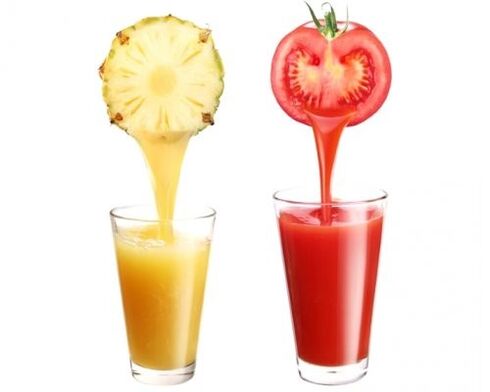
Types of Japanese Diet
There are 3 types of Japanese diet. They differ in the number of days:
- 7 days;
- 13 days;
- 14 days.
The diet must be followed regardless of the type of technique.
14 days diet
The salt-free slimming system is designed for 2 weeks. During this phase, there is a gradual release of fat cells and their burning. During the first 3 days, the body is purified. During this period, experts recommend drinking plenty of water: boiled water and green tea to speed up the process of flushing out toxins. Typically, the diet can be divided into 2 phases, each lasting 7 days. At the initial stage, kefir is included in the menu. Steamed, fried and pan-fried dishes are omitted.
Diet for 7 days
The most gentle technique designed in a week. During this period, you can lose no more than 3-4 kg. The menu is strict, the products are strictly limited and cannot be substituted. During the weight loss phase, a restructuring occurs, during which the body gets used to the new diet, so experts say that this system is the least effective. The menu may include traditional Japanese dishes made with permitted ingredients. They cannot be added. For those who plan to lose weight according to Japanese women, nutritionists recommend choosing the "lightweight" option.
Diet for 13 days
The principle of operation of this type is no different from the previous two. The serving volume is not more than 200 g, the liquid is drunk when thirsty. Food intake - at the same time for 13 days. Observance of all the rules of the detox diet is mandatory. In less than 2 weeks, the intestines are completely cleansed, The fat burning process takes place gradually, so that in problem areas the skin retains its elasticity. The used energy supply is supplemented with protein foods.
Diet by day
Slimming dishes are fully compatible with European cuisine and do not contain foreign ingredients. The approximate menu is designed for 7 days, on the 8th day it is repeated. It is allowed to change the drink: replace coffee with green tea, kefir - with tomato juice. The daily norm of the product, if necessary, is divided into 2 parts according to the number of days (with weekly weight loss).
Diet (for 14 days):
- chicken fillet - 1 kg;
- fish fillet - 2 kg;
- lean beef - 1 kg;
- crackers or rye bread - 0. 5 kg;
- chicken eggs - 20 pcs;
- white cabbage - 2 pcs;
- zucchini and / or eggplant - 1 kg;
- carrots - 2. 5-3 kg;
- fruit (unsweetened) - 1 kg;
- lemon (large) - 2;
- kefir (low fat) - 1 l;
- olive oil - (cold pressed) - 0. 5 l;
- tomato juice (homemade) - 1 liter;
- natural coffee (seeds or powder) - 1 pack;
- green tea (large leaves) - 1 pack.
The rate of water consumption depends on the person's age and weight.
The food set is enough for three meals a day. It is possible to replace non-carbonated mineral water with boiled water. The minimum fluid volume per day is 1. 5 liters.
Detailed daily menu plan (by day):
- For breakfast (8. 00) - a weak cup of natural coffee. Do not add cream, sugar, condensed milk. For lunch (13. 00) - shredded cabbage stewed in its own juice with a small amount of extra virgin olive oil, 2 hard-boiled eggs and 250 ml of tomato juice. For dinner (18: 00) - fish (200 g boneless fillet), steamed or boiled.
- Breakfast - coffee without milk and sugar, a slice of rye bread. Lunch - stewed cabbage with olive oil and steamed (boiled) fish fillet (100 g). Dinner - boiled beef (100 g) and 250 ml of low-fat kefir.
- For breakfast - a weak cup of natural coffee and rye toast. For lunch - a vegetable stew made from eggplant or zucchini. For dinner - a salad of fresh, oiled white cabbage. You can eat 2 eggs and 200 g of boiled lean beef (with pulp).
- Breakfast - raw grated carrots, lemonade. Lunch - boiled boneless fish fillet (200 g), 250 ml of tomato juice. Dinner - unlimited fruit.
- For breakfast - raw grated carrots, lime juice. For lunch - boiled boneless fish fillet (200 g), a glass of tomato juice. For dinner - fruit in any quantity.
- Breakfast - unsweetened coffee or green tea. Lunch - 0, 50 boiled chicken (skinless breast or thigh), fresh vegetable salad (carrots and cabbage) with a little oil. Dinner - hard-boiled eggs (2 eggs), Fresh grated carrot salad with avocado.
- For breakfast - unsweetened green tea. For lunch - stewed or boiled beef. For dinner - any dish (excluding dinner for 3 nights).
The menu can be displayed as a diagram. Experts recommend placing a piece of paper with a drawing in a visible place.
How to get out of the diet the right way
A type of dietary nutrition must be followed for 2-4 weeks after the diet. During weight loss, the body will get used to small portions and low-calorie foods. Diet avoidance is necessary to maintain a normal weight and optimal functioning of the gastrointestinal tract. It is recommended to gradually return to the normal diet: foods rich in carbohydrates are added a little bit each day. Release period is at least 14 days.
Meals should be portioned, not increasing the weight of the portion. The diet should be mainly foods containing a small amount of calories and replenishing energy reserves during weight loss. Protein-containing foods (eggs, poultry and fish) should not be reduced. In the menu, fats and carbohydrates are introduced gradually. Salt and sugar can be added in small doses. Drinks should be plentiful, no more than 2 liters per day.
During the break from the diet, it is allowed to eat cereal for breakfast. Oatmeal, buckwheat and broken rice are boiled in water. Vegetables and fruits are eaten raw in any quantity. It is best to give preference to sweet and sour apples. Snacks are introduced between main meals: a glass of kefir or rice cakes. Rye bread is replaced with whole grain or unleavened bread.
Pasta and confectionery, pies and snacks are not included in the diet.
Diet expenses
Products approved for use in the process of weight loss are in the middle price category.
Advantages and disadvantages
The Japanese method of weight loss has several advantages and disadvantages. The benefits include:
- effective;
- availability;
- cleansing simultaneously with weight loss;
- detailed menu;
- Three meals per day;
- increased muscle tone.
The effect is due to the rapid fat loss process, the results appear after 7 days. The products are available to everyone and can be purchased in any store. No need to calculate calories in advance, the menu is clearly written. Food 3 times a day, a hearty diet, so the feeling of hunger rarely occurs. Cleansing the body helps to normalize metabolism. Due to the high protein content in the food helps to strengthen the muscle structure.
The disadvantages are:
- unbalanced diet;
- vitamin and mineral deficiencies;
- lack of a hearty breakfast;
- the need to adhere to the rules in order to get rid of the diet;
- short-term weight loss;
- contraindications.
A diet that is not balanced and does not adhere to the ratio of fats, proteins and carbohydrates increases the risk of side effects. The decline in natural defense responses, the deterioration of the condition of nails and hair occurs due to a lack of vitamins in the body. The right diet prevents the development of stressful situations that can lead to rapid weight gain.
Contraindications and harm

The diet is suitable only for healthy people. Before losing weight, you must examine and consult a nutritionist. Contraindications include:
- get pregnant at any time;
- Breastfeeding;
- stomach and duodenal ulcers;
- corrosive damage to the digestive system;
- pathology of the kidneys and liver, including failure;
- anemia;
- gallbladder disease;
- diseases of infectious etiology;
- pathology of the cardiovascular system;
- anemia;
- Diabetes;
- blood pressure spikes;
- exacerbations of chronic diseases;
- Gout.
The diet is not suitable for the elderly and adolescents. Any non-compliance with the general rules of the technique increases the risk of side effects. In the early days, nausea and stool disturbances (constipation or diarrhea) may appear. Gastrointestinal disturbances accompanied by excessive bloating or abdominal pain. Occurrence of bad breath, heartburn and belching. Headaches occur on the basis of a complete refusal of sugar.
Nervous disorders and sleep disturbances develop for the same reason. Due to the lack of fat, there is a bitter taste in the mouth. The appearance may deteriorate: the skin becomes pale and dry. Nutrient deficiencies lead to joint pain.
Diet recipes
Diet meals are added to the menu upon departure. You can diversify your diet with salads, first and second courses. Homemade desserts with low sugar content improve brain function and can be consumed in 14-15 days.

Diet salad "Hope" includes the following ingredients:
- potatoes - (2 pcs. );
- milk sausage - (2 pcs);
- chicken breast - (250 g);
- pickled cucumber - (1 piece);
- green vegetables;
- Salt;
- olive oil - (1 tbsp).
Cut boiled potatoes, boiled chicken and sausage into cubes. Put the mass in a deep bowl and season with salt. Add cucumbers cut into strips and chopped greens to it.
Season the salad with olive oil (first press).
Cabbage Lettuce:
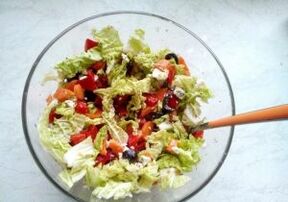
- Peking cabbage - (250 g);
- fresh cucumbers and tomatoes - (250 g);
- dangerous chili - (1 pc);
- hard cheese - (150 g);
- Salt;
- olives (1/2 can);
- olive oil.
Use your hands to tear the cabbage leaves into small pieces. Cucumber and tomato cut into large pieces. Chop the chili (half a vegetable) and put it in a blender. Mix all ingredients, salt and season with oil. Garnish the salad with grated cheese and olives on top.
The first courses are used at lunchtime. For ease of digestion, the soup is pureed. Spinach and Celery Soup:
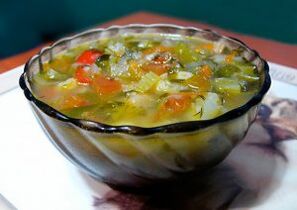
- lemon - (1 pc);
- tomatoes - (2 pcs. );
- spinach - (200 g);
- celery - (stem, 2 pcs. );
- green vegetables;
- vegetable broth - (1. 5 l);
- Salt;
- olive oil - (1 tbsp. l. ).
Pour olive oil into the preheated pan. Finely chop the celery stalks and sauté in oil. Bring the broth to a boil in a separate pan, add the chopped spinach and simmer for 5-7 minutes. Remove the skins of the tomatoes and puree in a blender. Add tomato paste to the spinach. Salt the broth, add the breadcrumbs. Cook for 15-20 minutes. Add a dash of lime juice and chopped herbs to the finished soup.
Creamy Mushroom Soup:
- champignons - (8 pcs. );
- potatoes - (2 pcs. );
- zucchini - (300 g);
- carrots - (1 tuber);
- onion - (1 bulb);
- weak meat broth - (1 l);
- flour - (1 tbsp. l. );
- olive oil - (2 tbsp. l. );
- cream - (1 tbsp. l. ).
Cut the boiled vegetables into small cubes and put in a blender. Boil water. Fry the dough until golden brown, add to the broth, add the pureed vegetables. Heat the soup over low heat until thickened, then salt, add cream and garnish with herbs. The first course was served with rye toast.
Beef stew with vegetables:
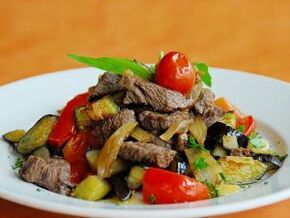
- beef - (500 g);
- olive oil - (3 tbsp. l. );
- potatoes - (200 g);
- carrots - (1 tuber);
- bell pepper - (1 pc);
- onion - (1 bulb).
Toss the onion, bell pepper, and grated carrot in half in olive oil. Boil beef until half cooked, let cool and cut into small bars. Place meat over fried, salted vegetables. Place sliced potatoes on top. Salt again. Pour the broth over the vegetables. Cook the dish over low heat for 25-30 minutes.
Indian manti is a dietary dish, the preparation of which takes place in 2 stages. Ingredients for the dough:
- flour - (1. 5 cups);
- warm water - (1 glass);
- Salt.
Dissolve salt in warm water. Pour flour on the work surface, make an indent in it. Pour in salt water part by part, knead gradually until the dough has elasticity. Cover it with a towel and leave for 15-20 minutes.
While the dough "fits in", you need to prepare the sauce. Required ingredients:
- champignons - (6-8 pcs. );
- carrots - (1 tuber);
- scallions - (4–5 feathers);
- zucchini - (400 g);
- olive oil - (2 tbsp. l. );
- ketchup - (2 tbsp. l. );
- chicken fillet - (400 g).
Cut champignons, zucchini and carrots into small cubes. Boil chicken fillet and chop into strips. Fry onions in oil and ketchup, gradually adding carrots, zucchini, mushrooms and meat. Pour 150-200 ml of water into the stir-fry and simmer until the vegetables are soft.
Roll the dough into thin strips and coat each with oil. Cut strips of paper into squares (10x10 cm), which are stacked on top of each other. The dough is steamed in a pressure cooker or slow cooker for 15-20 minutes. The dough "columns" are laid out on a plate, drizzled with vegetable sauce and sprinkled with herbs.
Results and reviews
In 2 weeks, you can lose weight from 8-9 kg. Most of the women and men who have lost weight using this technique speak positively about it.
First review, female, 36 years old
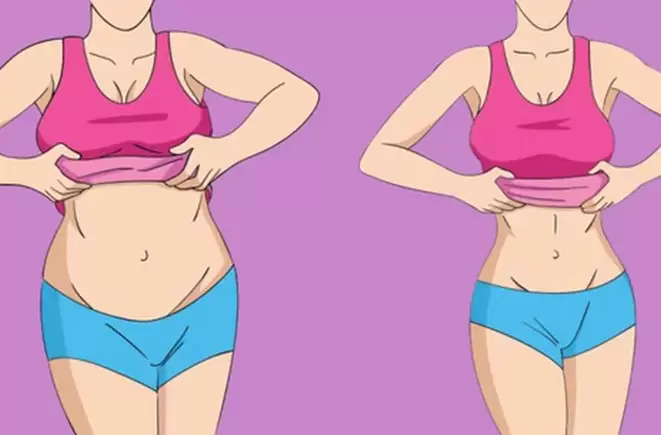
I started recovering in my teens, I tried many diets - they didn't help. I went to a nutritionist, got a health check, ate separately, continuously calculated calories, arranged fasting days, in 5 months only lost 2 kg. The Japanese slimming course was advised by a friend, I did not manage to lose 7 kg in 2 weeks. I decided to try it.
Medical examination showed no contraindications. Nutritionists have given detailed recommendations regarding the diet. The system does not require a large material investment. On the advice of the doctor, she drew the menu in detail, pasting the sheet of paper into the refrigerator. For the first 3 days, I was almost dumbfounded: the portions seemed small, the feeling of hunger was constant. By day 4 it was easier, I tried to chew food longer and drink more fluids.
The second phase of weight loss passed quickly. I cook on the machine: I remember the ingredients of the dishes and their weight. The food starts to seem satisfying, the hunger really goes away. There were no side effects, except for a short-term headache on day 3. The dietitian explained that it was due to a lack of sugar in the body. I left the diet for 20 days. I like the food at the exit, so I give up sweet, fatty, salty, and smoked foods. I am satisfied with the results: in 2 weeks I lost 10. 5 kg. In six months, I will be using this weight loss system again.
Second review, female, 28
I learned about this technique 2 years ago. At that time, she weighed 107 kg, an increase of 164 people, a huge number. There are health problems, and I am not satisfied with the way I look. Her friends couldn't advise an effective diet, so she decided to consult a therapist. The doctor recommends trying to lose weight using the Japanese weight loss system. The long grocery list was intimidating at first, but the dietitian reassured and explained the diet in detail.
In 7 days it lost 5 kg. The dishes on the menu were so hearty, I ate a portion. At first I was a little dizzy and a little nauseous. The side effects will go away on their own. She takes the food at the same time. The second stage of weight loss is easy: lightness, improved appearance and general well-being. Thanks to the diet, I was able to quit smoking and completely quit drinking. 13 kg went during the release period. For the past 1. 5 years, I have been eating right, I have been swimming and jogging, my previous weight has not returned.
















































































